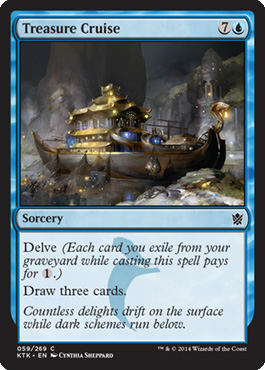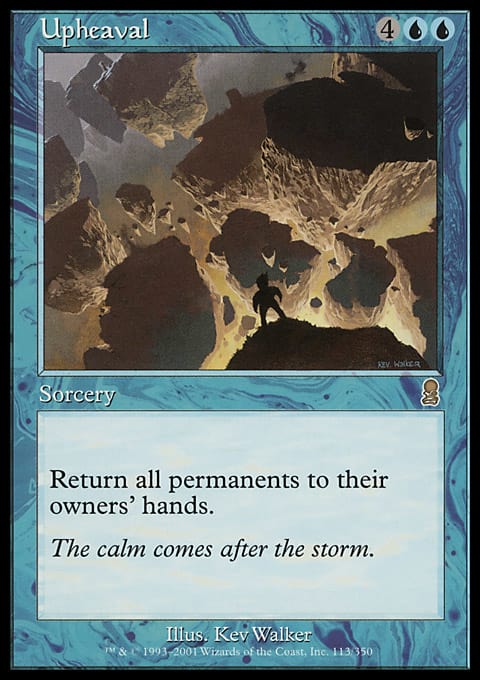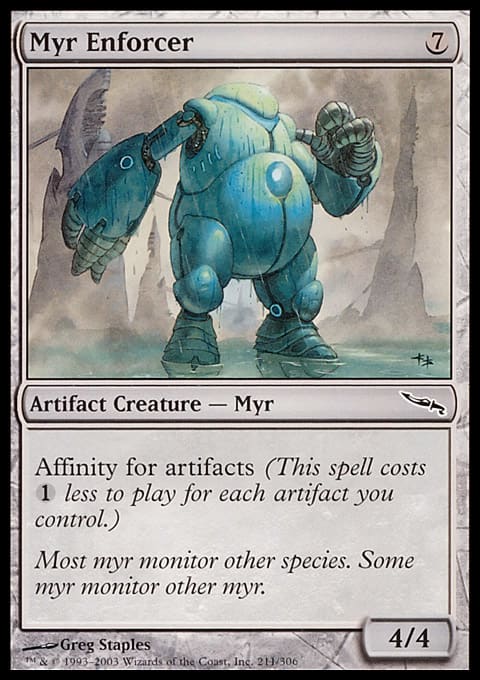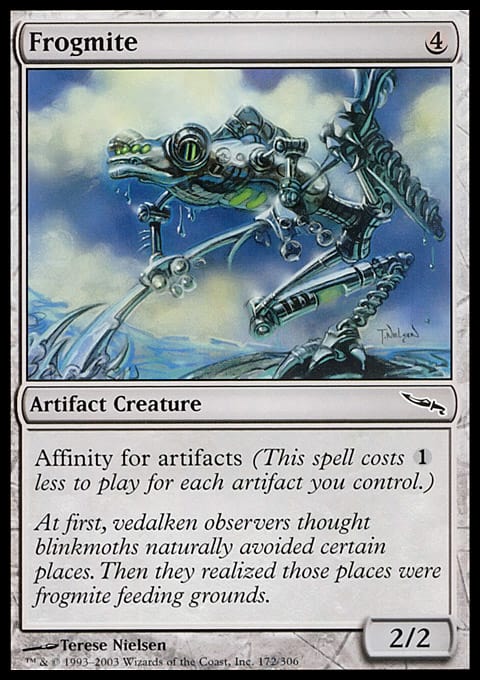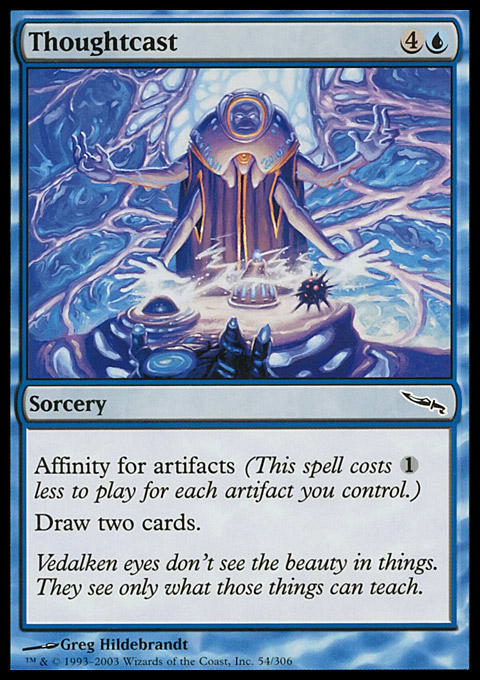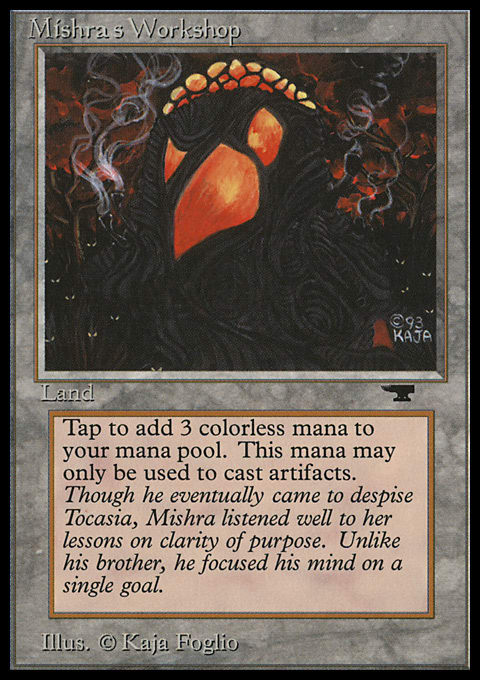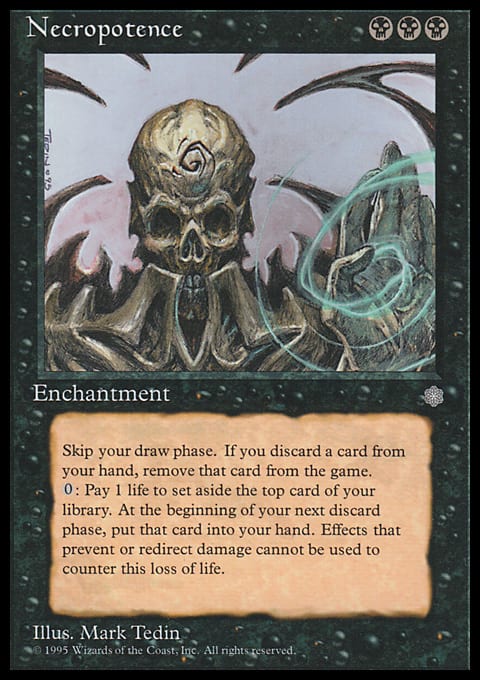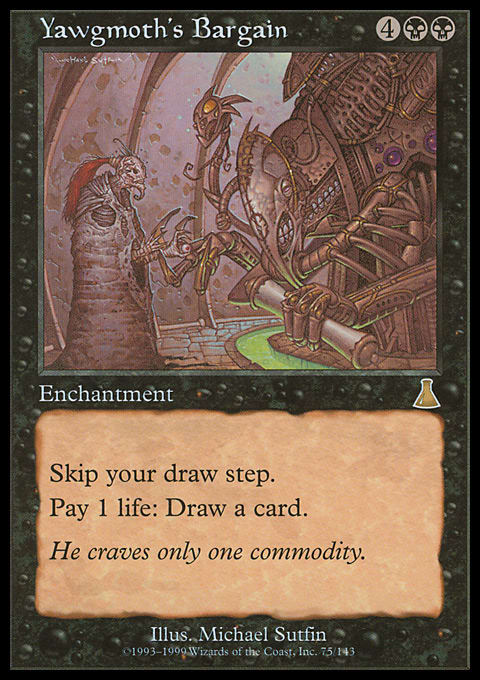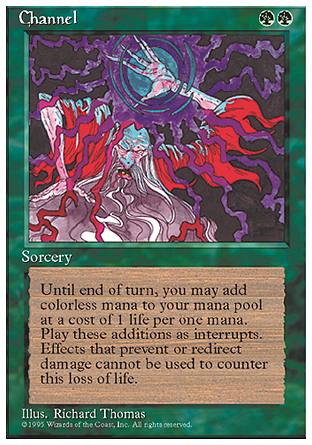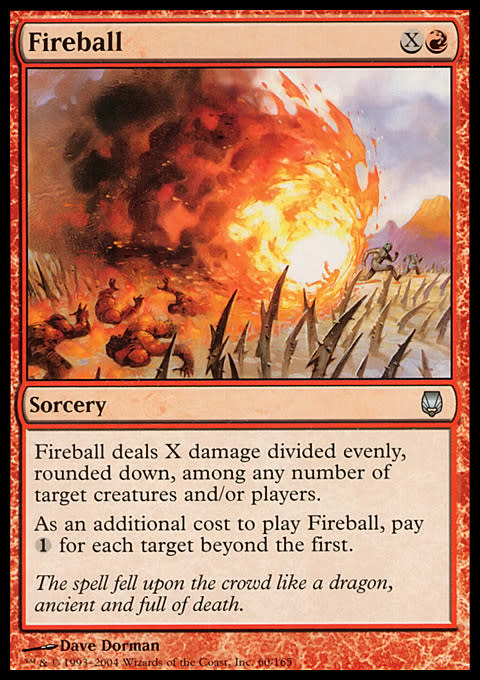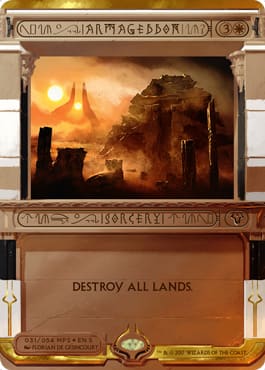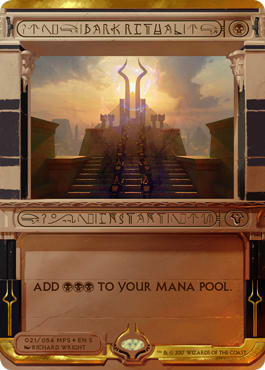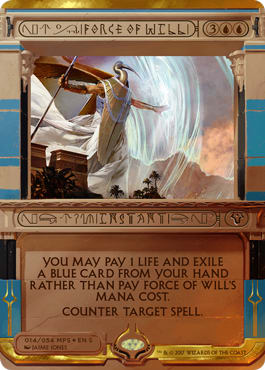So what makes a Spike Card a Spike card? Spikes care about winning at all costs. It doesn’t matter how many vulnerabilities a card or effect may have, a Spike takes it at a cheaper casting cost, and a Spike pushes hard. Take Phyrexian Mana as a great example. You don’t see Timmies or Johnnies normally running a card like Mental Misstep or Dismember. No one wants to pay life to make Dismember a cheap removal spell. Unless you’re a Spike, that is. Phyrexian Mana is a Spike mechanic and the cards with Phyrexian Mana costs are suitably Spike-y. Why?
Spikes see Magic as something to win, so their best cards reflect that. Spikes may not always be fun to play against. Often their decks are very straight forward, use the best spells and cards available, and push fast and hard out of the gate. They’re not always interested in whether or not their foe has enjoyed themselves, they care about winning. It’s a game after all. You play games to win.
Also, don’t forget that Spike is not afraid of using any tools out there to get the job done. It’ll use the big creatures and spells of Timmy and the combo of Johnny to lethal results. Take the classic Roar of the Wurm as a good example. Timmy looks at it and thinks about how cool it is to get one 6/6 Wurm now, and flash it back again for two Wurms! Johnny looks at it and thinks about ways to get the flashback to interact with other cards. Maybe you could target yourself with Millstone? How about using Whetstone to mill everyone, while you get Flashback spells to use? But Spike?
One of the most Spike metagames of all time was Odyssey Block Standard. Here, let me show you part of a very common shell then:
- 4 Basking Rootwalla
- 4 Circular Logic
- 4 Wild Mongrel
- 4 Arrogant Wurm
- 4 Roar of the Wurm
- 4 Quiet Speculation
- 2-4 Deep Analysis
Etc . . .
It was very common to do this:
- turn two drop Wild Mongrel
- turn three, attack, discard Rootwalla for 3 damage with Mongrel. Play Rootwalla for zero mana. Play Quiet Spec, search your library for three Roars, then toss them into your graveyard. Leave Blue mana open to discard that Circular Logic to Mongrel for a counter if needed.
- turn four – Start flashing back 6/6 Wurms while swinging with Mongrel and Rootwalla.
That was what Spike did with Roar of the Wurm. Yes, the usage of other cards is very synergetic, and the usage of big creatures is here too. But that is a Spike way of just abusing them for wins and profit.
That’s what Spike sees in a Roar of the Wurm
Now a lot of cards in today’s best of Spike list are getting reprinted in Eternal Masters, so in a few weeks, you’ll be able to open up some of the best Spike cards of all time. (I think we can all agree that a set like Eternal Masters is clearly geared towards Spikes over Johnnies and Timmies.)
Spike Cards Include:
10. Treasure Cruise, Dig Through Time, and other Delve Cards
Delve as a mechanic is all about pulling cards out of your graveyard to reduce your casting costs. Now, you can’t layer too much of it at once because it has some self-limiting properties. But stuff like Gurmag Angler and Become Immense have thrust themselves onto the Spike Scene with an immediate impact, with Delve hitting all the way up to the highest level of formats. Treasure Cruise is the star, but they have a lot of power here. And all of it is has a strong Spike feel — exiling cards in the graveyard for a reduced cost.
9. Upheaval
Ah yes, Upheaval, the card that enabled an entire deck type. Bounce your stuff to your hand, I’ll drop this Psychatog and win, and you can’t do anything about it — your stuff is off the table after all. Upheaval is one of the most powerful and commonly used cards which basically lock your foe out of doing anything of value. It’s similar to many spells that came before (Jokulhaups, Obliterate) or long-term tricks (Stasis). But Upheaval was clearly the most iconic of the cards, largely because it could bounce lands. The Upheaval player could replay lands and spells on that turn, float mana to play bigger things, discard cards for various effects, and more. And then the next player untaps, drops one land, plays, at most one card, and discards most of the stuff in their hand in order to get to 7 cards. Upheaval created an inherently unfair state. And it’s not just tournament world either, that thing is even banned in Commander.
8. Affinity for Artifacts led by cards like Myr Enforcer, Frogmite, and Thoughtcast
Affinity is broken. We all know it. Any idiot can toss together some artifact lands, some Affinity cards, and then a powerful slate of pro-artifact artifacts. Arcbound Ravager. Cranial Plating. Steel Overseer. And there’s your deck. One of the most dominant decks to ever smash Standard was Affinity. And Affinity is a perfect example of a Spike mechanic. You pull down the casting cost of a card to a small or non-existent amount, and drop cards for a lot less than you’d otherwise think. The shell is powerful, and the deck is Spike-ridden, and laden with cost reductions jumping out in front of opponents quickly, and powerfully. And Myr Enforcer and friends are there to get wins. And speaking of artifact Spike cards . . .
7. Mishra's Workshop / Tolarian Academy
Due to their double nature, artifact creatures are more vulnerable than normal creatures since they can be taken out two ways. And to really use these cards, you need enough artifacts to matter. Those are prices and vulnerabilities that Spike is more than willing to embrace for the Workshop and the Academy. (Another card I considered, but skipped is Tinker, which also is so cheap and brings out such a powerful card on the far end, but I decided against it. I didn’t want this list to be too artifact-centric, and it has a high Johnny metric as well).
6. Necropotence / Yawgmoth's Bargain
Ah yes. Black summer. Paying life to draw cards. After Necropotence was printed, and then later discovered (The original rare Black enchantment card from Ice Age everyone was looking at breaking was Oath of Lim-Dul). Then people began to blow folks out with it. You drop it, empty your hand, and then keep on blowing folks out. The deck had a bunch of cheap cards, like 4 each of Black Knight, Order of the Ebon Hand and Knight of Stromgald. You played your fast and efficient threats, and then played cheap cards elsewhere, and blew folks out. And that’s not all! People used Necropotence to fuel other decks too. Combo decks like Fruity Pebbles (Goblin Bombardment, Shield Sphere, and Enduring Renewal) would add in Necropotence and dominate their formats. Necropotence is the perfect example of a Spike card, and Yawgmoth's Bargain, banned in many formats, was a surprisingly bad reprint. It took a long time before Wizards got the life-for-cards concept right.
5. Channel /Hatred
Timmy doesn’t really want to pay life for mana. Channel, in particular, is a very Spike ability, swapping life for colorless mana. Yet this card was so powerful and feared in the most powerful format of all time that it was banned because of the Channel/Fireball combo. (Later on, you’d sub in Kaervek's Torch for the Fireball.) The basic concept of Channel is broken at a core level in ways that only a Spike would love. Another similar card is Hatred, often forgotten, but a similar arc you’d see players power out to win the game by paying a ton of life to kill you right now. Both cards expose you to a quick burn hit with something as gentle as Lightning Bolt, or a Counterspell, but that’s don’t stop Spike! (Fastbond is in the same oeuvre, although a little less Spike)
4. Balance
Balance has to be timed to really rock, since it has the potential to blow up your lands, creatures, and cards from your hand. But those are all prices a Spike pays willingly for this card. Balance is also one of the most powerful cards ever created by man. That helps. It dominates games. In Vintage, it was often used to virtually Mind Twist someone when you dropped some jewelry and a land on the first turn and forced someone to discard four or five cards from their hand. It defined decks like recursion, broke Bazaar of Baghdad, and was one of the most powerful tools versus control or aggro as needed. Balance was and is and forever shall be.
3. Armageddon
Mass land destruction was never pretty. But it was defining. And it was good. Armageddon was always a powerful tool in Standard until it rotated out after being stripped out of the core set, never to be printed again in a Standard legal set. Suitably so! This is a powerful card. It was used as a way push yourself to a win from a small dominant position. Imagine you go first. The moment you have the momentum, with a bigger creature, or a bigger threat on the table, you drop Armageddon and set everyone back three or four turns. By the time your foe has rebuilt, they’ve died. Classic examples of Armageddon include the Prison deck laden with tempo-rific card (Icy Manipulator, Winter Orb, etc) or in a shell that combined with Erhnam Djinn, dropped to give you an early push (often off a Birds of Paradise or Llanowar Elves on the third turn) and then used to get that victory. Armageddon is a powerful Spike-centric card.
2. Dark Ritual
Dark Ritual is arguably one of the most iconic, and perfect, Spike cards of all time. Invest one card, often on the first turn, to make 3 mana which speeds you up temporarily. Get the jump on your foes with a powerful drop, and then use it to give you a quick boost that will hopefully give you enough tempo to win the game. It’s a loss of a card for one Black mana. The classic Hypnotic Specter or later Phyrexian Negator are a good examples of how Spike works, and yet it’s vulnerable to one-mana answers like Swords to Plowshares. The Ritual is a bad draw later, and scales very, very poorly. The goal is to kill as quickly as possible with the quick injection. No one else is willing to trade a card for two extra mana like this (unless it’s used later to do something like fuel a critical turn with Yawgmoth's Will or Tendrils of Agony). See also: Black Lotus, and many Dark Ritual variants out there.
I’d argue that a lot of Alpha/Beta cards are some of the most powerful Spike cards of all time. Winter Orb. Stasis. Stone Rain. Wrath of God. Dark Ritual. Black Lotus. The Moxes. Ancestral Recall. Armageddon. Time Walk. Sol Ring. Mind Twist. Channel. Fastbond. You get the idea. These are definitive and powerful effects. Many of these cards are brutally efficient. Frankly, I could take this Top Ten Spikes of All Time, only include these cards: Mind Twist, Channel, Time Walk, Black Lotus / Dark Ritual, Armageddon, Stasis, Fastbond, Wrath of God, Ancestral Recall, and Contract from Below or Wheel of Fortune or something and defend every single choice, and you’d buy it without realizing it was themed as well. Some readers might not even notice, that’s how Spike this stuff is. It’s pushed. If Spike can best win with a Stasis, deck, then he’ll play it, regardless of whether or not you’ll have fun playing against it. If Spike can best win with a White Weenie into Armageddon deck, then he will. Whatever is the fastest, most efficient way to win. Losing life to drop lands to Fastbond or make mana with Channel? Spike is in. All of these cards work.
1. Force of Will
The pitch mechanic is a perfect example of a Spike cost for a free card. You get a powerful effect for free, and Spike will pay the life and the exiling of card from their hand in order to get it off. Because of that, Force of Will is arguably one of the best counter spells ever made for tournament play (Only Mana Drain is in the conversation). As a pitch spell, it was the most iconic of these free spells that you’ll see later with cards like Mental Misstep or Reverent Mantra or even Basking Rootwalla. All free! Gush! Foil! Thwart! Gitaxian Probe! You get the point. But the grandfather, and still the best power, is clearly Force of Will. It’s intoxicating. It’s one of the most dominating cards in any format, and arguably one of the most powerful cards ever printed after the Alpha/Beta era.
Note this is not a list of the Ten Most Powerful Magic Cards of All Time. We could debate that until Sunday. And certainly all of them would appeal to Spike, without necessarily being a “Spike” card. I wouldn’t normally call Giant Growth effects Spike ones, but when Spike can win with free Growth’s on cheap infect creatures, Spike will use them all day long. Spike’s tools are cost and efficiency. So, sure, whatever the best burn spell is in a given format will be in the Spike’s deck — Lightning Bolt, Incinerate, Shock, whatever. While we all know that Lightning Bolt is the best of those cards, I wouldn’t necessarily label it high on the Spike index per se.
Part of that is because Spike has no fidelity to Lightning Bolt, or anything else for that matter. If you are in a format where the metagame is big creatures off Oath of Druids, reanimation, or Show and Tell, then Lightning Bolt is pretty weak as an efficient early creature removal spell. Spike will move to something else very quickly. Timmy may have been running something like an X spell (Fireball or Comet Storm or whatnot) and Johnny some burn that may cost a little more, but work perfectly in that shell. (Like the Proliferate Volt Charge). Lightning Bolt isn’t any more of a Spike card than Island is.
But the cards above do get high marks from me on the Spike Scale. They are trading something, putting folks in certain places, and are powerful win conditions all at a cheap mana cost. Johnny likes a mass removal spell like Winds of Rath that can be built around. Timmy likes Plague Wind! Spike is a Wrath of God sort of player. Cheap, and you can just deal with the consequences.
Cards on my short list include Sundering Titan, Yawgmoth's Will, and such.
So what do you think? What cards did I miss? What should be put up there as one of the best Spike cards of all time?
Oh, and here’s to Spikes! You guys are closers. When a multiplayer game has gone on long enough, you end it. When Johnnies can spend 15 minutes taking a turn, you just go for the throat. When Timmy is not doing anything and Johnny is trying to find that third Myr Moonvessel, you are attacking and pushing folks around, and reminding them why we play the game. Yes, Timmies remind us to have fun. But Spikes remind us it’s a game. So we need to keep it moving along.
















